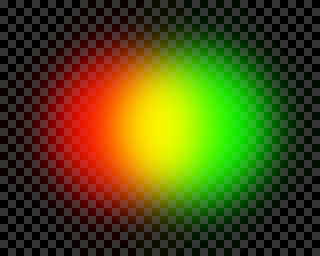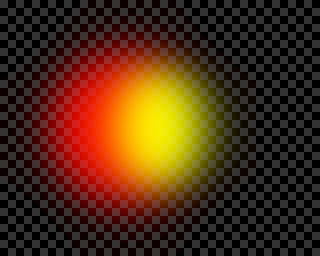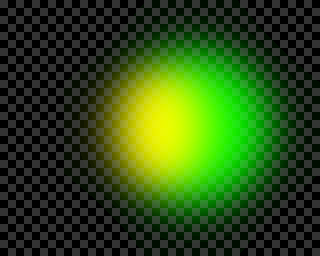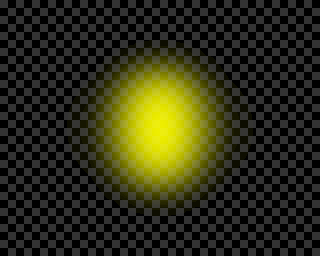Cette commande ouvre la fenêtre de dialogue « Créer un nouveau calque » qui permet d’ajouter à l’image active un nouveau calque vide. Dans la pile des calques, le nouveau calque vient se placer juste au-dessus du calque actif.
![[Note]](images/note.png)
|
Note |
|---|---|
|
When a floating selection is present, this command will show up as . Using this, will turn the floating selection into a normal layer without opening the New Layer dialog. |
You can access this command
-
From the main menu through → .
-
By using the keyboard shortcut Shift+Ctrl+N.
-
From the Layers Dialog, you can access it through the command of its context menu, or by clicking on the
icon button on the bottom of that dialog.
Below the title « Create a new layer », the name of the image that this new layer will belong to, is displayed. To the right of the title a thumbnail of that image is shown. This will enable you to check that you are adding the layer to the correct image when there is more than one image open.
- Nom du calque
-
The name of the new layer. It does not have any functional significance; it is simply a convenient way for you to remember the purpose of the layer. The default name is « Layer », but it remembers the last name you used. If a layer with the name you chose already exists, a number is automatically appended to it to make the name unique (e.g., « Layer #1 ») when you click to create the layer.
- Color tag
-
If you click on one of these color buttons, the "Eye" icon box of the created layer will have this color. This can help you identify or group layers to make them easier to spot when you have a lot of layers in your image.
- Mode
-
A layer's mode determines how the layer is combined with the layers below it. The default is « Normal ». The drop-down list offers a wide choice of layer modes, also known as blend modes. On the right, there is another drop-down list to select between « Default » or « Legacy » layer modes.
Layer modes are described in more detail in Layer Modes and Legacy Layer Modes.
- Espace de fusion, Composite space
-
The color space used for blending or compositing the layer with the layers below it. « Blending » determines how the colors of the upper and lower layer are mixed together, and « compositing » how the upper and lower layer are merged together with respect to the transparency of each pixel.
Depending on the layer mode (see above) one or both of these settings may be disabled. It is only enabled for layer modes where setting this has any effect. When enabled, the default is Auto. The other choices are RGB (linear) and RGB (perceptual). Note that what Auto translates to, depends on the chosen layer mode. It is not the same for all modes. Some use linear, others use perceptual.
The linear and perceptual (non-linear) encodings are described in choosing precision and encoding and in the Glossary.
![[Note]](images/note.png)
Note When changing the layer mode, both Blend space and Composite space are always reset to Auto to make sure the settings make sense for that particular layer mode.
- Mode composite
-
The layer Mode, sometimes referred to as its « blend mode » (Normal, Multiply, etc.), determines how the color values of the layer and its backdrop are combined (together with the Blend space setting). The composite mode of a layer determines how the alpha values of the layer and its backdrop are combined (together with the Composite space setting). The layer's backdrop is the content against which the layer is composited; namely, it's the combination of the layers below it.
There are two regions of interest when compositing the layer against its backdrop: the opaque region of the backdrop, and the opaque region of the layer. The layer's blend mode determines how to combine the colors of the intersection of these two regions: i.e., the common opaque region of both the backdrop and the layer (pixels belonging to only one of these regions don't need to be combined with anything, and retain their original color). The layer's composite mode determines which part of these regions to keep, and which to discard.
The example images below show the composition of two layers — the bottom layer containing a red feathered circle, and the top layer containing a green feathered circle — using « Addition » mode, and different composite modes (applied to the top layer).
-
Union : conserve les régions opaques du calque et de sa toile de fond, c.-à-d leur union.
-
Réduire à la toile de fond : ne conserve que les régions opaques de la toile de fond (ce qui inclut la région commune du calque et de sa toile de fond, c.-à-d leur intersection).
-
Réduire au calque : ne conserve que la région opaque du calque (ce qui inclut la région opaque du calque et de sa toile de fond, c.-à-d leur intersection).
-
Intersection : ne conserve que la région opaque commune à la toile de fond et au calque, c.-à-d leur intersection.
-
Auto : le mode « Auto » n’est pas un mode composite séparé, mais correspond plutôt à l’un des autres modes composites : pour « Normal », « Dissoudre », et « Fusionner », il correspond à « Union », et pour les autres modes (qui gèrent des modes composites différents) il correspond à « Réduire à la toile de fond ».
-
- Opacité
-
Définit l’opacité de la peinture sur le calque. La valeur par défaut est 100%.
- Width, Height
-
Ici vous indiquez les dimensions qu’aura le nouveau calque. Quand le dialogue apparaît ces valeurs sont initialisées à la taille de l’image. Vous pouvez les changer et choisir dans un menu les unités de mesure. Un calque peut être plus petit ou plus grand que le canevas de l’image et de toute façon vous pouvez toujours changer ultérieurement sa taille.
- Offset X, Offset Y
-
The default origin of the new layer is the upper left corner of the image canvas. Here, you can set the exact position of the layer. By choosing a negative offset, you can set the layer to be partially outside the image canvas.
- Remplir avec
-
There are numerous options for filling the new layer: the current Foreground color, the current Background color, Middle Gray (CIELAB), White, Transparency, and the current Pattern.
- Commutateurs
-
The switches Visible, Lock pixels, Lock position and size, Lock visibility and Lock alpha on the right side of this dialog are described in the Layers dialog documentation. See Layer Attributes.








